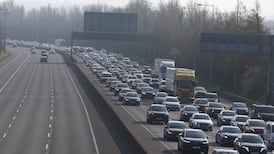In spite of commitments by successive governments, Dublin remains a city where the private car is king and public transport remains underfunded and underdeveloped. The National Transport Authority (NTA) was supposed to provide a more balanced, efficient system, reflecting the needs of commuters. But its efforts have been restricted by local objections, vested interests and political interference.
The latest manifestation of those interventions will see the North/South MetroLink ending at Charlemont, north of Ranelagh, rather than farther south at Sandyford, as originally planned. There are echoes here of the campaign that delayed Luas lines from traversing Dublin city for about two decades.
A right to object to projects is necessary. But a balance must be struck between the rights of individuals and the public good. Fairness is also a prerequisite. In this instance, the original NTA MetroLink plan required the closure of Dunville Avenue in Ranelagh, bringing traffic diversions. Locals and motorists objected and interventions by senior politicians followed.
Alternative solutions were rejected. Now the North/South MetroLink will stop at Charlemont. Contrast the response to representation from those wealthy suburbs to the manner in which residents at College Gate apartments were ignored. The plan to demolish their inner-city homes in the middle of a housing crisis remains the “optimum solution” for the NTA.
As happened with cross-city Luas lines, the NTA may be playing a long game. It has confirmed that growing traffic on the green line will require it to run 30 trams an hour in each direction by 2028. That will cause such congestion at Dunville Avenue that motorists will have to find alternative routes. In the meantime, the NTA will tunnel past the Charlemont stop to allow for the conversion of the Luas line to a metro system at an appropriate time – in about 20 years or so.
Changes to the original plan on the north side will see the transfer of a construction site from GAA club lands to those of Home Farm Football Club. Building a more compact station there and the relocation of a boring machine will see construction time reduced from seven to three years. A metro station planned for the middle of O’Connell Street is to be moved to one side because of disruption to public and private transport.
Green Party leader Eamon Ryan suggested the metro line might now be extended to UCD and Sandyford. The Taoiseach said he was open to that idea. With Brexit looming and Government finances under threat, however, nothing is likely to happen until a review of the transport strategy for the Greater Dublin Area takes place at the end of next year. By then, the revised MetroLink application will have been submitted.










